Hype, trend or matured technology and the best thing since sliced bread? These are the questions currently being asked about downcountry bikes. But what does a downcountry bike have to be capable of and who should buy one? We put six of the hottest examples to the test and tell you what is hype, what is real, what matters and which model is the best.
Table of content: What is in this test?
- What is a downcountry bike and what does it have to be capable of?
- The downcountry test field
- Where did we test the bikes?
- The ENDURO test crew
- Our downcountry group test in numbers
- Our evaluation criteria
- The tops and flops of our downcountry group test
- What is the best downcountry bike of 2022?

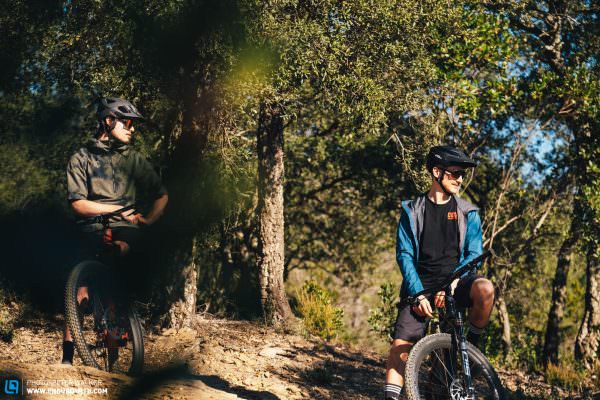

Wait a minute, what’s that doing there? Tires with small knobs, locked out suspension and climbing for fun instead of just a means to an end? Even if we mostly ride enduro bikes with race numbers, or trail and bike park bikes wearing flannel shirts, that doesn’t mean you can’t have a ton of fun aboard less hard-hitting rigs. On the contrary: “less” is often more fun. We already saw that in 2015 as we conducted our first downcountry group test, which we rocked in California with our US team from back then! Most riders don’t live next to a bike park, in Finale Ligure or Whistler, but rather in regions with moderate terrain. And it’s here that less capable bikes are more fun. Who wants to shoot clay pigeons with a tank?
Those who know us know that we’re up for anything that promises to be fun – gravel rides, enduro races, camping adventures, eMTB rides, motocross tours, classic car races and even downcountry bikes! Because, often, less turns out to be more fun!

What is a downcountry bike and what does it have to be capable of?
New bike categories, new model names and redefined use cases – the bike industry has never been short of creativity and neologisms. There’s no counting the number of bike hypes we’ve lived through. Some earn their place, but many vanish after a short time or only prevail in certain regions or countries. Currently, the term downcountry is en vogue, but what’s the point and what’s new about it?
Many major bike manufacturers, such as Canyon, Trek, Specialized or SCOTT, have a so-called downcountry bike in their lineup. However, these bikes have been around for a long time, it’s just the name and the marketing that’s changed. Back in 2015, we tested downcountry bikes in California, using the working title “New-school XC bikes”. Was it the same thing? Absolutely! Nevertheless, that was over seven years ago and bike technology has advanced in leaps and bounds since. Still, basic criteria such as wheel size, travel and even weight are very similar. See for yourself and take a look back at ENDURO issue #015. Now, let’s get back to the topic at hand: categories.



What’s the difference between cross-country, downcountry, all-mountain and trail bikes?
Cross-country bikes are usually designed to win races. They’re all about lightweight construction and maximum performance! Those who aren’t racing against the clock will usually have certain disadvantages. After all, nobody goes shopping in a Formula 1 race car. Racing performance usually comes at the cost of comfort, durability and handling. Downcountry bikes, on the other hand, aren’t developed and modified to win races, but rather for maximum fun, though you can occasionally find them on starting lines of events like the Canadian BC Bike Race.
Where do we draw the line between downcountry bikes, trail bikes, all-mountain bikes, tourers and whatever else you can think of? What’s important to note is that modern bikes can’t be defined on the basis of certain features or specs. Instead, it’s many factors combined and the intended use above all that determines their category or name. We don’t just prove this in our latest mountain bike group test, but in most of the previous group tests we’ve done.

Downcountry bikes are forever trying to strike the right balance between physical exertion and fun. They try to combine the climbing prowess of a cross-country bike with the downhill capabilities of a trail bike. This results in a very wide and diverse variety of bikes. Therefore, everyone should ask themselves what it is they’re looking for.
Most of the downcountry bikes on test have crossed over from XC racing. However, this category of bikes hasn’t been immune to the technical revolutions and evolutions of the past few years, showing a strong tendency towards longer travel and more aggressive geometries. For fun-focused downcountry use, the travel grows even longer, the builds rely on more robust components and the geometry gets adapted. That’s not to say bikes can’t go the other way, as proven by the YT IZZO UNCAGED 7. It is the only bike on test that offers less travel than its namesake and has been specced with lighter, less robust components.


What are the points speaking for and against a downcountry bike?
You can take a Formula 1 car to go shopping, monster truck over curbs or ride your enduro bike along river banks and gravel paths, but it just isn’t that much fun!
Let’s be honest. Most of us would be fine aboard less hard-hitting bikes when we ride our local trails, which are the ones we typically spend most of our time on. We drag unnecessary travel and weight along gravel paths and up climbs to get to the trailhead. Long story short: you want only as much as is necessary and as little as possible. When you ride a less capable bike, it can add new dimensions to the trails you’re so used to, making them challenging and fun once more. You’ll be able to reach your limits sooner if you want to, and it feels less subdued and therefore faster. It’s like driving a classic 911 Porsche along a mountain pass. Of course, you’d be faster in a newer, modern vehicle, but the experience is so much better, rawer! Back in the woods, the paths and climbs to the trailhead that used to bore you can become a lot of fun and not just a means to an end. So, it’s just more fun overall and that should be the goal. However, you’ll run into problems sooner on rough trails and rugged alpine terrain. If the trail gets too demanding, you’ll quickly reach your limits, and the additional reserves of a trail bike would be more forgiving while being less likely to suffer damage. So, if you only own one bike, the unique character of downcountry bikes offers limited versatility.

It’s like driving a classic 911 Porsche along a mountain pass. Of course, you’d be faster in a newer, modern vehicle, but the experience is so much better, rawer!

The test field: 6 of 2022’s most exciting downcountry bikes at a glance
There are many mountain bikes on the market with the same technical specs as the bikes in this test. However, we were a lot more interested in the brands’ intended uses. Based on that, we chose the most exciting bikes to make up our test field. Some manufacturers declined from the outset because they knew that, while their bike is labelled as downcountry, it offers little in the way of trail performance!
| Bike | Price | Weight | Travel f/r |
|---|---|---|---|
| BMC Fourstroke 01 LT ONE (Click for review) |
€ 8,499 | 11.6 kg | 120/120 mm |
| SCOTT Spark 900 Tuned AXS (Click for review) |
€ 9,499 | 11.5 kg | 130/120 mm |
| SIMPLON Cirex SL 120 (Click for review) |
€ 9,389 | 9.98 kg | 120/116 mm |
| Specialized Epic EVO Expert (Click for review) |
€ 7,000 | 11.4 kg | 120/110 mm |
| Trek Top Fuel 9.9 XX1 AXS (Click for review) |
€ 12,099 | 12.2 kg | 120/120 mm |
| YT IZZO UNCAGED 7 (Click for review) |
€ 6,999 | 11.8 kg | 120/120 mm |
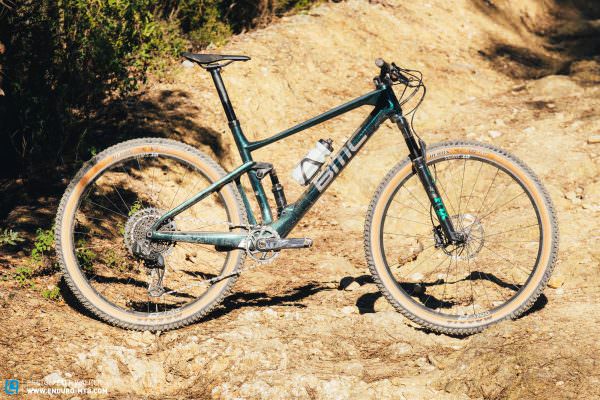
11.6 kg in size L | € 8,499 | Click for review

11.5 kg in size L | € 9,499 | Click for review

10 kg in size L | € 9,389 | Click for review

11.4 kg in size L | € 7,000 | Click for review

12.2 kg in size M/L | € 12,099 | Click for review

11.8 kg in size L | € 6,999 | Click for review
All 6 bikes on test roll on 29″ wheels and feature a carbon frame. However, the weight difference is more than 2 kg. The lightest bike on test – the € 9,389 Simplon Cirex SL 120 – even manages to come in below 10 kg! We’ll get into how this influences it on the trail and why it still lags behind on the climbs a little later. ;)



Likewise, the bikes’ travel isn’t a decisive factor in their performance on the climbs or descents. The forks offered a maximum of 130 mm travel up front, paired with at least 110 mm at the rear. The price differences were huge too. For example, the Specialized Epic EVO Expert and YT IZZO UNCAGED 7 share the podium as the most affordable bikes on test, priced at € 7,000. On the other end of the spectrum, you’ll find the Trek Top Fuel 9.9 XX1 AXS, which is available for eye-watering € 12,099 and also happens to be the heaviest bike on test, weighing in at 12.24 kg. The SCOTT Spark 900 Tuned AXS came on board with its revolutionary frame design and specially developed TwinLoc system, going for € 9,499. SCOTT’s Swiss compatriots BMC took on the competition with their € 8,499 Fourstroke 01 LT. Unfortunately, Canyon, Rocky Mountain and CUBE didn’t have bikes available for testing due to the current supply bottlenecks.



Where did we test the bikes?
Food-o-rama, Lycra and us – Oh, and bon dia Girona
Downcountry bikes don’t just provide a different riding experience, they also allow you to explore new locations. The Spanish city of Girona is a sought-after destination, especially amongst our drop-bar colleagues. On top of that, it’s one of the most prestigious spots on earth when it comes to fine dining. So, besides providing the perfect test conditions, we were entertained by the territorial disputes between the food bloggers and the roadies. ;)
We also rode the bikes on our home turf around Stuttgart, discovering plenty of new trails and challenges while doing so.



The ENDURO test crew

As a Whistler bike park veteran, Peter usually prefers long-travel bikes, hitting big jumps and blasting through rock gardens. However, less capable bikes help spice up his commutes and post-work rides on the trails around Stuttgart.

Gravel aficionado and former downhill racer. These polar opposites make Ben the perfect man to find the ultimate compromise. He knows all about rolling resistance and going over the bars, providing important insights thanks to years of experience.

When others are gasping for breath, he’s still got a smile on his face. With 2% body fat and more than 20,000 km of road riding per year – without a motor, of course – Tobi outsprints everyone in the team and appreciates a well-structured training plan. He’s mastered the ability to switch between lactic acid burns and rushes of adrenaline.

Aerodynamics? You’ll find none of that here. Simon typically rides with his shirt unbuttoned and his rear wheel drifting. Shaving his moustache would make no difference. If we were to record our test rides, he would probably cover twice the distance of everyone else. Playing on the trail, weaving back and forth, and fast direction changes are his speciality.

By the time the rest of the team arrives, Mike has already disassembled and analysed half his bike. He inspects every component, looking for the causes of problems and fixing them if necessary. No one’s as critical as he is, using his technical knowledge and finesse to deliver devastating judgments.




Our downcountry group test in numbers

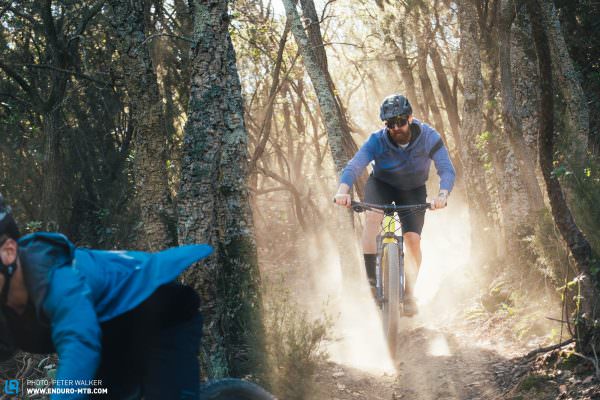



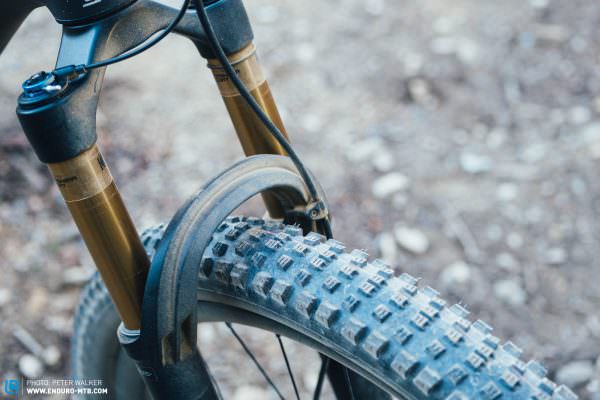













Our evaluation criteria for the best downcountry bike of 2022
What makes a downcountry bike the best climber and does it need a lockout?
Whether it’s an all-day ride or just a quick outing, you’ll always benefit from a comfortable riding position. For downcountry use, where the climbs play a decisive role, it will tend to be slightly more aggressive, i.e. stretched. That helps weight the front wheel, keeping it planted and in control. The most stretched riding positions proved to be particularly advantageous on very steep climbs. However, the Trek Top Fuel and SCOTT Spark show that touring comfort and good climbing capabilities can be combined, though they do so in completely different ways. The Trek doesn’t need a lockout function, able to dispense with it thanks to the right choice of components as well as consistent geometry and kinematics. On the other hand, the SCOTT relies on a remote lockout with 3 settings, which works well on this bike. You can choose from open, pedal and lock. Other bikes in the test field – such as the YT – come with a simple open or closed lockout function. Whatever the system, it’s got to suit the bike’s suspension. Some of the bikes on test have an unnecessary lockout setting while other bikes would benefit from additional adjustability. For example, the BMC has a 3-stage lockout, but the rear suspension is so firm that the difference between the open and pedal modes is insignificant. The Simplon, on the other hand, only has the open and lock options, though it would benefit greatly from something in between. The rear suspension bobs heavily when pedalling with the shock open, but it can’t generate enough traction on loose ground when it’s locked. It’s due to this that it cannot keep up with the competition on the climbs despite its low weight.
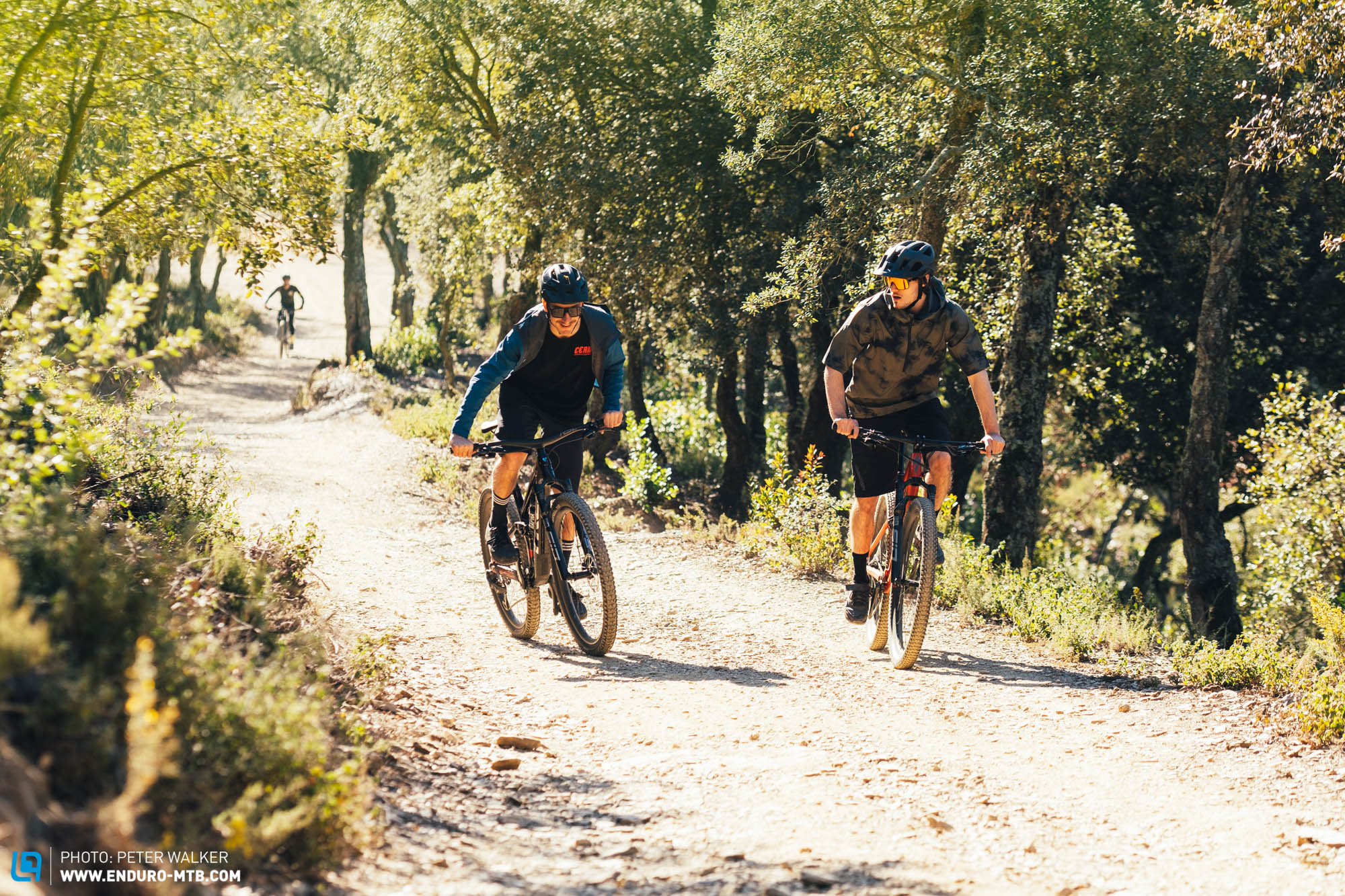
What does the perfect downcountry suspension have to do?
A bike’s suspension has a big influence on its overall performance. Of course, downcountry bikes have considerably less travel than enduro bikes. Therefore, it’s even more important how the travel is used. The perfect suspension offers traction, support and reserves. Only then will you have sufficient braking and cornering grip while being able to pump the bike through rollers and berms, generate speed on the trail and have sufficient reserves to mitigate rider errors and overshot landings. The rear suspension of the SCOTT is very plush, providing tons of grip on the trail but lacks support. As such, bunny hopping requires more input from the rider and pumping the bike doesn’t generate as much speed. Aboard the YT, you can pop off lips, rail berms and generate lots of speed through dips and rollers thanks to its progressive rear suspension. However, it lacks braking traction and grip through open corners since the rear end isn’t sensitive enough to keep the rear wheel tracking the ground. There’s just one bike on test that’s capable of combining all three characteristics. The Trek Top Fuel provides a lot of traction, support and sufficient reserves, showing the competition how it’s done!



What does the perfect build look like on a downcountry bike?
Along with the suspension’s capabilities, the components also play a significant role. One of the negative outliers on test is the Step-Cast fork. By recessing the bottom of the casting, FOX were able to reduce the fork’s weight. However, this also makes it less stiff and therefore less precise. As such, we’d advise you to forget about the weight saving of approx. 200 g in favour of better performance on the trail. The tire choice also has a big influence on trail performance, and not just on the descents. Traction can save you a ton of energy on the climbs. Improved grip can be achieved through aggressive tread, a soft rubber compound and by lowering the tire pressures. However, dropping the pressure requires a suitably thick casing. The above also applies when riding downhill. On the flip-side, you’ve got rolling resistance and tire weight, which, added to the weight of the wheels, can significantly influence acceleration, i.e. rotating mass. The trick is to find a good balance, suitable for the terrain. A fast-rolling tire on the rear combined with a grippy front tire usually makes the most sense on a downcountry bike. Besides offering improved puncture protection, a robust casing – such as the MAXXIS EXO – allows you to reduce the tire pressure to increase grip and cushioning.
More traction also helps take advantage of the brakes’ stopping power. Good brakes don’t just reduce arm pump and provide better modulation, but they also make riding safer, letting you stop quicker in an emergency. Therefore, saving weight on the brakes is an absolute no-go! SCOTT lead the way here by equipping the Spark with powerful four-piston Shimano XTR brakes and combining them with 180 mm rotors front and rear. Two-piston brakes, such as those found on the BMC and Simplon, don’t meet our expectations of a downcountry bike and aren’t reliable enough to safely descend long and steep trails – the heavier the rider, the more critical this is! Freedom of movement on the bike can also boost rider confidence. Therefore, in addition to short seat tubes and long-travel dropper posts, you should be able to insert the seat post all the way into the frame. Most brands on test rely on 150 mm dropper posts, though some would have gotten away with longer models, for example the BMC’s short dropper only allows you to drop the saddle by 80 mm, soyou’ll find it constantly getting in the way on the descents, ultimately eroding your confidence.

Can the performance of a downcountry bike be reduced to the spec sheet?
For this downcountry group test, the price played a subordinate role. It’s not that we don’t care about money, but we think the price should always be considered in relation to performance. We don’t like measuring a bike’s value based on its spec or the amount of bling you get for the money. We’re more concerned with how a bike performs on the trail and how it benefits the rider. What’s the point of the best components if the bike doesn’t deliver on the trail? As such, expensive bikes with a lower-end spec can still offer excellent value for money, provided they perform when it counts. Simultaneously, affordable bikes with good components can get a bad rating if they don’t live up to expectations when we ride them. It ultimately comes down to the interaction of many different aspects, from the suspension through to the geometry and all the way to the smallest component. Therefore, expensive components alone don’t say much about a bike’s real-world performance!
What influence does weight have on the performance of a downcountry bike?
Generally speaking, when you start to focus more on the climbs, the advantages of weight savings also increase. After all, all that mass must be accelerated and then transported uphill, against the force of gravity. However, it’s where you save the weight that matters most. Doing so should never come at the cost of trail fun and safety. Saving weight by speccing smaller, less powerful brakes or inappropriately thin-walled tires offers no benefits, just disadvantages! Our tests also proved once again that efficient suspension is much more valuable than low weight. The Trek Top Fuel is the heaviest bike on test and has relatively aggressive tires, but it still manages to pull away from the lightest bike in the field on technical climbs.
The tops and flops of our downcountry group test
Tops

Powerful brakes are an absolute must when it comes to trail riding. The SCOTT Spark 900 Tuned AXS shows how it’s done with its four-piston Shimano XTR brakes and 180 mm rotors.

More and more mountain bikes come with hidden storage compartments and integrated tools. There’s enough space for snacks and spares inside the down tube of the Trek Top Fuel 9.9 XX1 AXS.
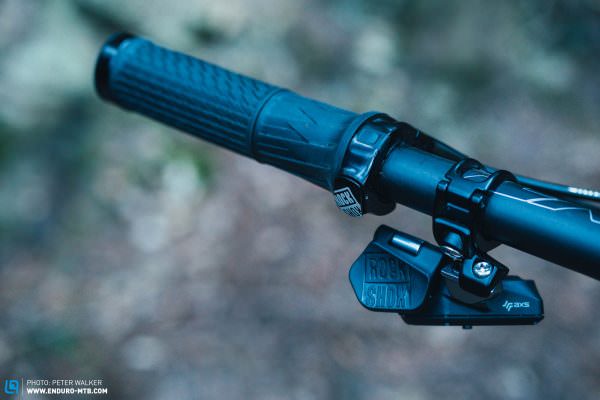
A lockout remote should be simple to use and reduce the risk of confusion. There’s nothing more annoying than accidentally extending your dropper on the descents. The YT IZZO UNCAGED 7 is clearly at an advantage with its RockShox TwistLoc.

The Trek Top Fuel 9.9 XX1 AXS is the only bike on test where the suspension manages to offer support, traction and reserves combined while also getting away without a remote lockout function. It just doesn’t need it!

Most of the bikes on test have a clean frame due to internal cable routing, but the cables around the cockpit often look messy. The Trek Top Fuel 9.9 XX1 AXS has very few cables and a one-piece cockpit – cleaaaaaan!
Flops
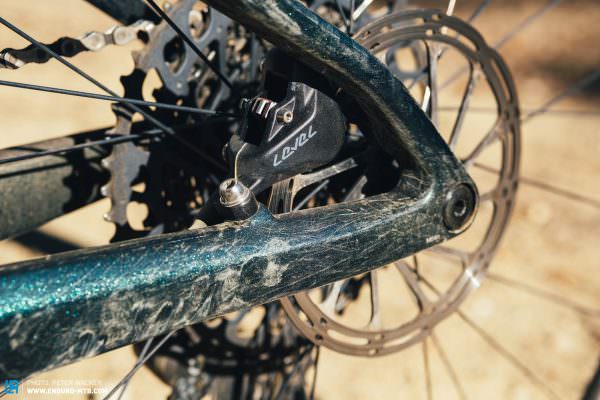
The BMC Fourstroke 01 LT and Simplon Cirex 120 SL only come fitted with two-piston brakes front and rear. They don’t offer enough stopping power and can’t handle long descents.

Slick tires with a hard rubber compound may be fast on flat terrain and asphalt, but they don’t offer enough grip on the climbs or descents. Moreover, the bike’s expensive carbon rims are at risk when paired with puncture-prone casings.

Cumbersome remotes don’t just lead to confusion on the trail, but also spoil the look of the bike and risk being damaged in a crash.

Most brands strive to keep the cable routing and the cockpits looking neat, but the sheer mass of cables – which is often caused by the remote lockout – usually spoils the bike’s clean look

A dropper post with just 80 mm travel (in frame size L) is far too short, unnecessarily restricting your freedom of movement. In future, we want at least 150 mm.
What is the best downcountry bike of 2022? The winner and other recommendations
All bikes at a glance
The key specs of a test field have rarely been as similar, yet the bikes’ characters couldn’t be more different, addressing very different types of riders. The SCOTT Spark 900 Tuned AXS is a real head turner with its revolutionary frame design, though it isn’t consistent with its clean look. While the cables for the in-house TwinLoc remote add a lot of clutter, it’s plenty of fun on the trails once you’ve gotten used to it. As such, the Spark will make you smile both up and downhill and is a great choice for riders who want a confidence instilling bike that can generate a lot of traction. However, it isn’t the most poppy if you’re looking for something playful. The YT IZZO UNCAGED 7 stands out from the crowd with its striking yellow paint job. It’s also the only bike on test that has less travel than its namesake. The handy RockShox TwistLoc remote is great to use and minimises confusion. However, you’ll rarely need it because the suspension of the IZZO is extremely firm, offering an efficient climbing platform even when the shock is open. On the descents, you can play with the trail, weave through trees and pop off lips without fear of bottoming out. However, the firm rear suspension and the shallow tire tread result in a lack of braking and cornering traction.


The Trek Top Fuel 9.9 XX1 AXS makes a statement the moment you arrive at the trail centre. Priced at € 12,099 and weighing in at 12.2 kg, it’s the most expensive, yet also the heaviest bike on test. However, it looks extremely clean from front to back and dispenses with a remote lockout function. The Top Fuel will let you beat your PR’s both up and downhill and the suspension offers traction, support and reserves combined. The Trek will instil you with confidence and should therefore appeal to every type of rider. No matter if you want to play with the trail, hit roots at full speed or just want to reach your destination in one piece. Thanks to the integrated storage compartment in the down tube, you can also enjoy an energy bar while you wait for your buddies. The Specialized Epic EVO Expert features a plain red colour scheme and nifty details such as an integrated mini-tool. Unless you activate the remote lockout, it bobs heavily as you pedal, making for a slow yet comfortable climber. Once at the top, it will let you blast down the descents, hit jumps, rail berms and drift casually through the corners. No other bike on test is as much fun riding downhill, which is why playful and stylish riders will love this bike.


If you like the feel of lactic acid burn, the Simplon Cirex 120 SL will let you sprint until your legs are on fire. At just under 10 kg, it is the lightest bike on test and very fast on smooth surfaces. That said, you’ll have to slow down on technical climbs and descents since the components don’t help this bike to go fast, requiring a skilled rider to keep up with the competition. If you tend to ride in technical terrain, the bike isn’t for you. The same applies to the BMC Fourstroke 01 LT, which will let you shoot up forest road climbs like a thoroughbred XC bike and fly along trails in a stretched riding position. Its handling is easier on the descents than the Simplon and provides more precise handling. However, the 80 mm dropper post robs you of confidence on steep descents and the underpowered brakes will have you slowing down long before your buddies.

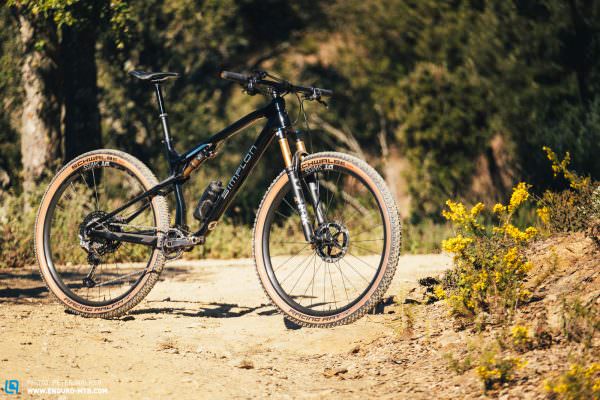
The best downcountry bike of 2022: Trek Top Fuel 9.9 XX1 AXS
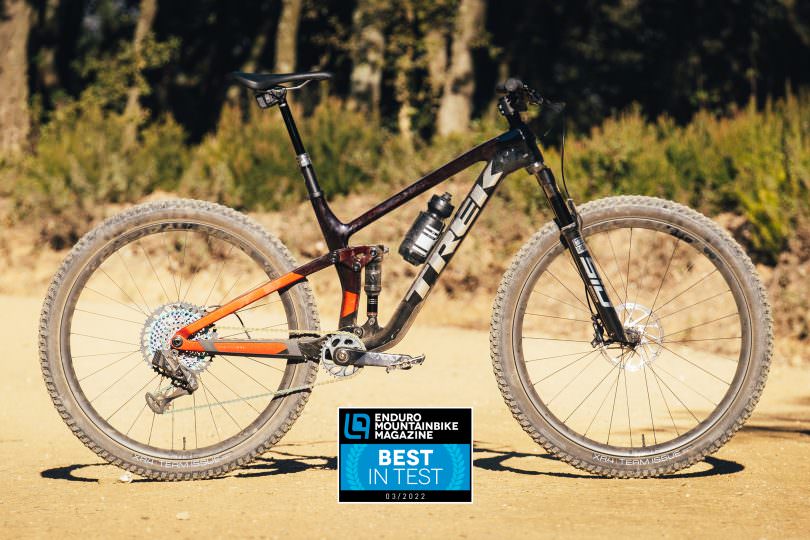
120/120 mm (f/r) | 12.2 kg in size M/L | € 12,099
The Trek Top Fuel 9.9 XX1 AXS 2022 didn’t just impress us with its clean look, practical details and harmonious spec. It also delivers on the trail. The efficient rear suspension generates tons of traction and allows you to power to the trailhead no matter how steep and technical the climbs, even with the shock completely open. Moreover, the intuitive handling and progressive rear suspension will put a massive grin on your face and make you wish the day won’t end. Whether it’s to feel the burn of lactic acid, a quick post-work spin or an epic singletrack adventure, the Top Fuel delivers. It’s the deserved Best in Test of our downcountry group test.
For even more anaerobic exercise and a revolutionary comparison between drop bar and flat bar bikes, we recommend checking out the visionary concept group test headed up by our sister magazine GRAN FONDO.
Did you enjoy this article? If so, we would be stoked if you decide to support us with a monthly contribution. By becoming a supporter of ENDURO, you will help secure a sustainable future for high-quality mountain bike journalism. Click here to learn more.
Words: Peter Walker Photos: Peter Walker, Benjamin Topf









